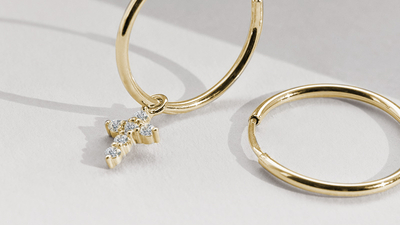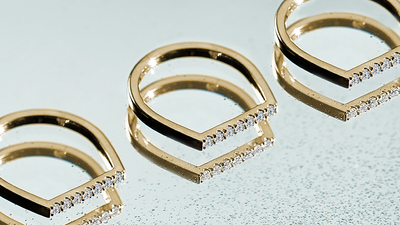While they tend to be safely stored away during the year, the public's attention is drawn to them during very special occasions. We are of course referring to the British Crown Jewels which, as a collection, are made up of over 100 priceless objects of incalculable value. But the Crown Jewels are also very interesting from the point of view of gemology. In total, they contain over 23,000 precious stones, including some of the rarest in the world.
St. Edward’s Crown
The oldest and at almost 5lbs (2.2 kg) also the heaviest surviving British crown is St. Edward's Crown. It was made of 22 carat gold in 1661 and is decorated with 444 gems, including sapphires, rubies, amethysts and tourmalines. It was originally set with stones which were rented specifically for coronations until the early 20th century, when King George V had the crown set with permanent stones. The crown has important symbolic significance for the British monarchy, since it is used exclusively for the coronation of British monarchs. It was also placed on the head of Elizabeth II, who became Queen through this act. However since the crown is too heavy, it is no longer seen in official coronation portraits. Queen Elizabeth replaced it with the much lighter British Imperial Crown for the rest of the coronation ceremony. As the Crown of St. Edward is only used for coronations, it very rarely leaves the Tower of London where it is kept. The exception was the celebration of the 60th anniversary of the Queen's coronation in 2013.
The Imperial State Crown
The crown most often seen and worn in public is the Imperial State Crown. It is worn by the monarch at important state events, such as the annual opening of Parliament. The current Imperial State Crown was made especially for the coronation of King George VI in 1937 and it replaced an earlier crown made for Queen Victoria in 1838, which had broken in an accident. It is much smaller and lighter than St. Edwards’s Crown. It is unique because among other things, it is adorned with a diamond called the Cullinan II, also known as the Second Star of Africa. It was created by splitting the largest diamond ever found into several pieces which were then cut and polished. Another important gemstone, the Black Prince's Ruby, is also set into the Imperial State Crown but it is, in fact, a red spinel. It was quite common historically for spinels to be mistaken for rubies. The cross at the top of the crown is decorated with a stone called St. Edward's Sapphire.
The Crown of Queen Elizabeth The Queen Mother
This elegant platinum and diamond crown was made for the wives of kings specifically for their coronations. The Queen Mother's Crown was first worn by Queen Elizabeth, the Queen Mother who was the grandmother of the current king, Charles III at the coronation of her husband, King George VI in 1937. One of the world's most famous gems, the somewhat controversial Koh-i-Noor diamond, found its way onto the crown. It prides itself on its unusual clarity, brilliance, a stylish oval cut and a weight of 105 carats. The Koh-i-Noor diamond was found in 17th century India and has changed hands many times over the centuries. In 1849, after the conquest of Punjab, it was taken under strict security to London, where it was handed over to Queen Victoria. Even today, it is still claimed by India, Afghanistan and Pakistan among others.
The Sovereign's Scepter
The 530 carat Cullinan I, also known as the Great Star of Africa (currently the largest cut colorless diamond in the world) shines in the Sovereign's Scepter. It was only set into the scepter in 1910, when the original 17th century scepter was redesigned, however it can be removed from it and worn as a brooch. Together with The Sovereign’s Orb and the Coronation Spoon, the scepter forms part of the heart of the collection of sacred crown jewels, the Coronation Regalia, which is used during a coronation ceremony.
The Coronation necklace
At the coronation of Queen Elizabeth II in 1953, we also saw, among others, the Coronation Necklace. What makes it so special? It contains 26 large diamonds including a central one which weighs 23 carats and which is known as the Lahore Diamond. This stunning necklace is a total of 161 carats and is considered the most expensive necklace in the world. No wonder it was one of Queen Elizabeth's favorite pieces of jewelry. She often wore it on important occasions with matching earrings.
The British Royal Crowns and Jewels are an integral part of British heritage and symbolize the country's long and wonderful history. They are not only an ornament, but also a reminder of the country's glorious history and royal power, which has changed over the years but still remains an important part of British culture.










